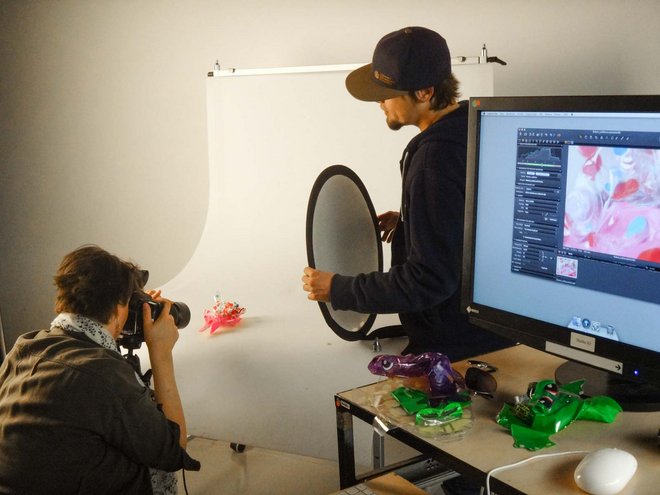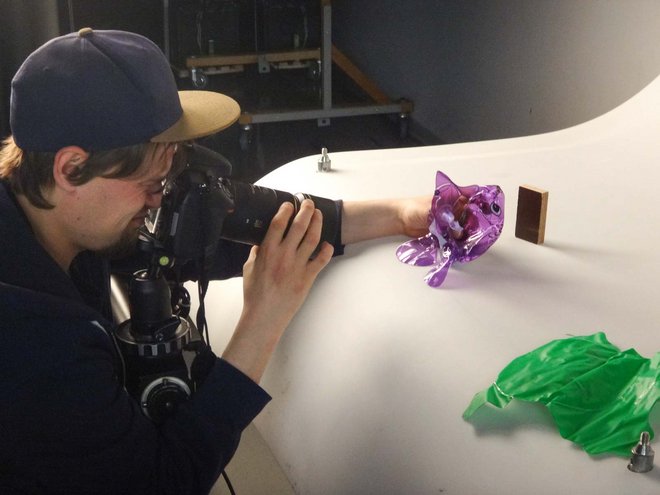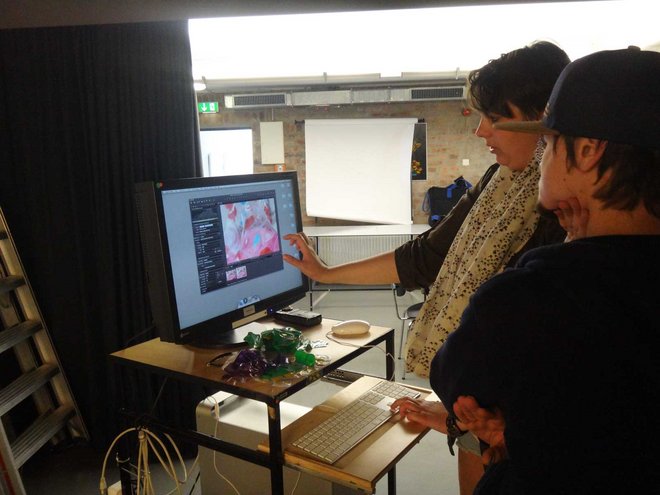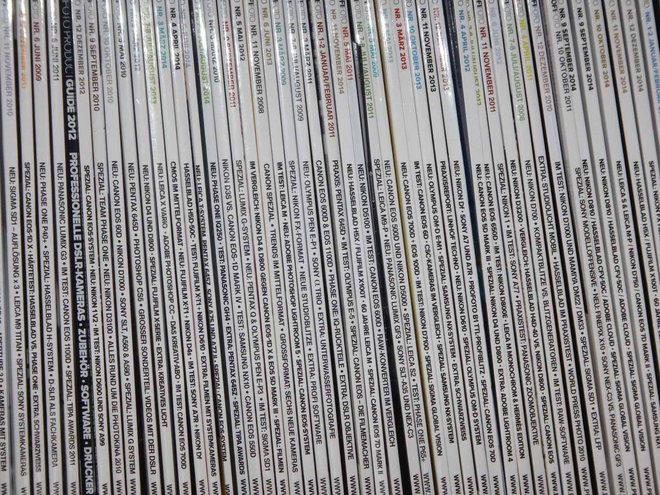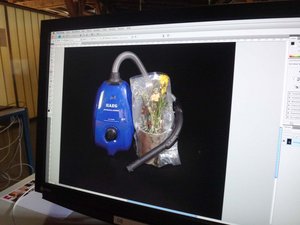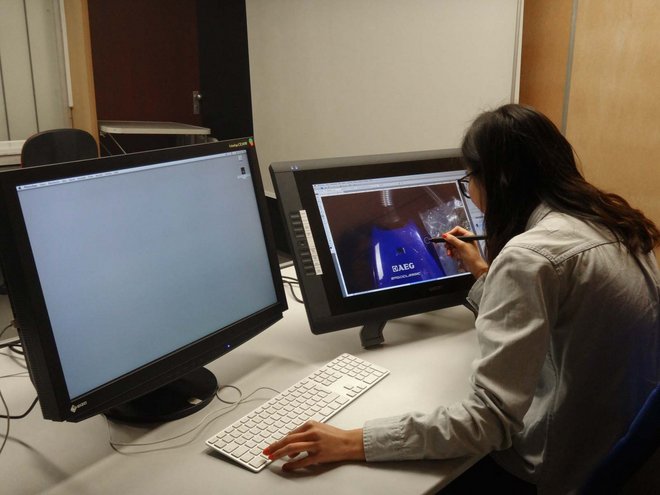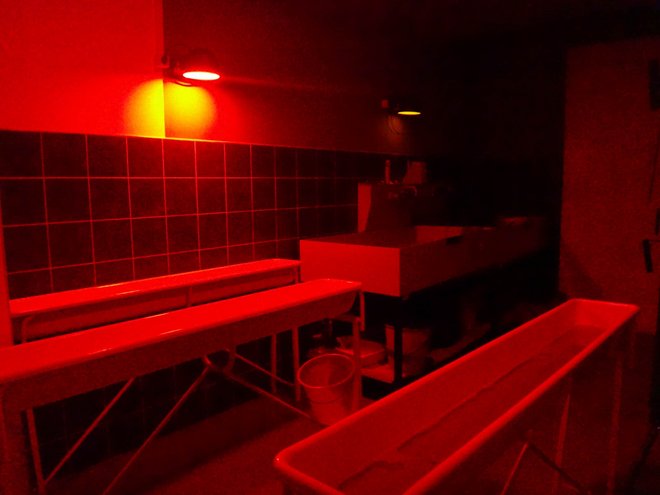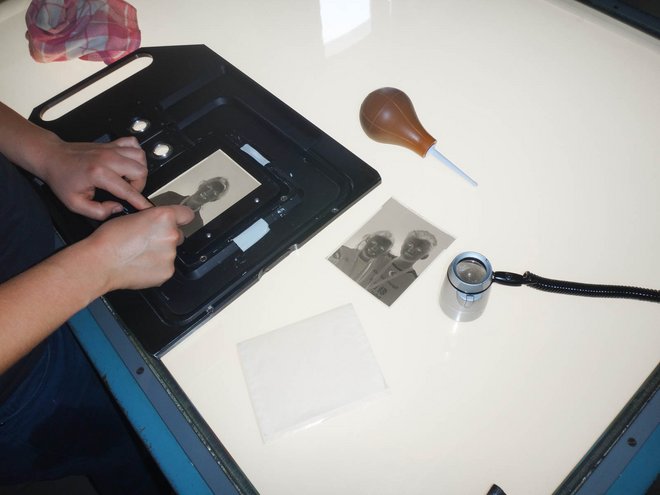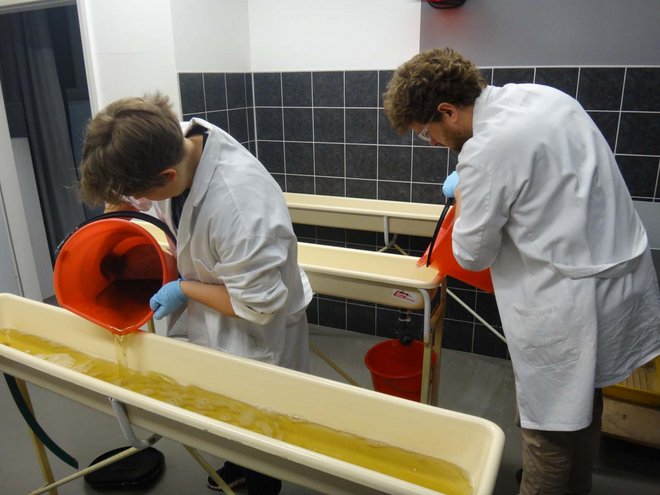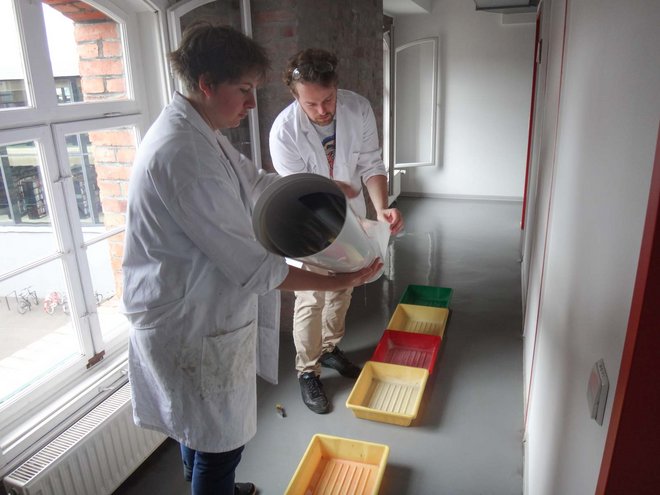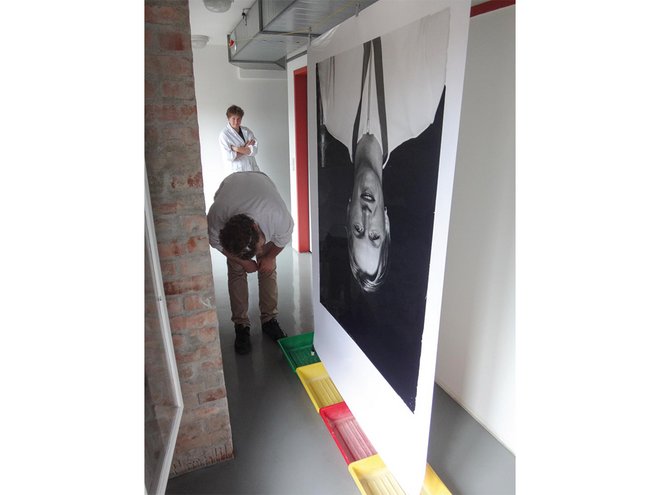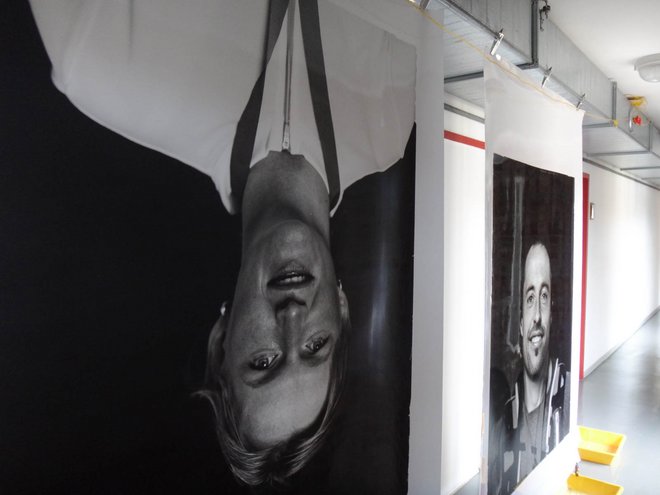Light, Shadows, Darkness
Students interested in photo work will find everything they need to realise their ideas and concepts in the Photo Workshop of the Faculty of Design. Regardless of whether it is digital or analogue photography, every step of the work can be implemented in a professional manner in the rooms under the roof of the Limona. For their photographic work, students have access to a fully equipped 90-square-metre photo studio, excellent cameras, darkrooms and high-end studio workstations, among other things. Familiar with the equipment and the various work steps, workshop managers Jonas Tegtmeyer and Andreas Oberthür help them.
We visited the Photo Workshop in the summer semester of 2015. We accompanied students in the realisation of their ideas and gained insights into the numerous possibilities that this workshop has to offer.
Photographing air? No problem!
"Air ¾" is a project offered by Prof. Hermann Stamm and Dipl.-Des. Jens Hauspurg in which students of Visual Communication, Product Design and Liberal Arts could participate. One of the core questions that determined this project was how to depict air photographically. Three students found very different answers to this question.
Robert: The air is out of it.
Robert is sometimes out of breath. Through his studies of visual communication in the eighth semester at the Bauhaus University Weimar, he is often busy finding new ideas, derivations and perspectives for the most diverse projects. That's exhausting. Every now and then, he has these breathless moments. But this time it was precisely these moments that inspired the "Luft ¾" project. Even inflatable animals know when they run out of air. So Robert came up with the idea of photographing them - without much 'filling'. Subsequent computer technology overlays are supposed to make the image unrecognisable later. The idea is that the viewer sees something he can't quite place. He only notices that it is something that is crumpled, broken and flat - that the air is out.
When the photos are exhibited, however, the inflatable animals are also to be distributed around the room. In this way, the viewer can look for the corresponding counter-object to the photo. So that it doesn't just remain an idea, more macro photos are scheduled for today. This is already the third attempt. In the previous ones you could still see too much of the shape of the objects. Together with fellow student Nancy, who is advising him today, they photograph the same section of each inflatable animal five times, each time with different points of focus. At the end, an image processing programme combines the photos into a high-resolution macro image. Since the glossy surfaces of the plastic animals are very reflective and sometimes transparent, it is not easy to place the light points correctly.
Simple or not, Robert finds macro photography fascinating. For his upcoming bachelor's thesis, he wants to design a magazine whose basic theme is macro photography. So Robert will also have the opportunity to use the lockable room sky of the Photo Workshop more often. He says enthusiastically: "I can have night here at eleven in the morning. And if I need sunlight at 11 p.m., I can get close to it with the softboxes and appropriate reflectors. The play of light and the possibilities of day and night manipulations that you have here are really rad. I'd like to have that at home too."
Pansy: Air Poverty - The Relationship between Man and Woman
Pansy is an exchange student at Bauhaus University Weimar for one semester. At home in Canada, she is enrolled in the graphic design programme and has already gained experience with image editing there. In Weimar, the Canadian is dealing with photography in detail for the first time. Yesterday alone, she already took over 100 photos in the studio. In each of the pictures you can see dead flowers and a hoover.
Pansy is above all interested in the relationship between the two objects, because for her they symbolise the sometimes unsparing relationship between man and woman. In her eyes, the flowers embody life, love and death. They need air to live. If there is no air, the flowers die. Fortunately, one of her friends had an old bouquet lying at home. Pansy had first tried to find some in Weimar flower shops. But there she often only heard: "We don't sell dead flowers.
The experience she had already gained in Canada with special software now stands her in good stead. Some of the photos she took yesterday in the studio she is improving today using an image editing programme in the Photo Workshop's computer pool. In this way, Pansy makes colour corrections, adjusts contrasts and removes small reflections, for example. After her studies, she wants to work in the field of packaging design, says Pansy. She is convinced that the knowledge she has gained in the field of photography will later also be useful for designing juice packaging, for example.
Anna and Clemens: Analog is the real thing
Over 15,000 people take part in the Thuringian Rennsteig Run every year. Anna and Clemens, both students of visual communication in the sixth semester, were also there this time. However, they ended up right at the finish line: because instead of running, they photographed - the athletes right after the run.
For the project "status gold _ the real thing", which was accompanied by the artistic assistant Dipl.-Des. Jens Hauspurg, Anna and Clemens worked together with the Thüringer Tourismus GmbH. In the finish area of the Rennsteiglauf, they had set up a large-format analogue camera so that they could photograph around 50 runners there. They also took digital pictures that will be used for a photo series about the participants of the race in a magazine.
Today, the students in the Photo Workshop are exclusively interested in negatives. They want to print analogue pictures that are about 1.27 metres wide and 1.50 metres high. To do this, they place the negative in an enlarger located in the large-format darkroom. Here, the negative is X-rayed and projected onto photographic paper. Anna and Clemens then develop, stop, fix and water the photo in individual steps. To dry the picture, they finally hang it up in the workshop for at least half a day.

https://vimeo.com/151002348
Click the Play button to load and view external content from Vimeo.com.
Automatically load and view external content from Vimeo.com (You can change this setting at any time via our »Data protection policy«.)
What sounds simple is actually quite complicated. Every single step has its own pitfalls. Photographing with large-format technology, choosing the right photo paper and also the exact choice of exposure time need to be carefully considered and require numerous test runs. The result is impressive in any case. The large, analogue photos have a different effect than digital pictures, if only because of their sharpness. They were exhibited at summaery2015 in the old state bank in Weimar's Steubenstraße and on the internet at www.statusgold.de/wordpress/.
Even though Clemens enjoyed working in the large-format darkroom: his favourite in the Photo Workshop is the colour darkroom. It's more for the impatient. "The whole process happens here in a single machine. You expose your picture, push it in at one end and after 4 minutes it comes out fully developed, stopped, fixed, watered and dried," Clemens explains. Next semester, better colour photos after all?

https://vimeo.com/151002349
Click the Play button to load and view external content from Vimeo.com.
Automatically load and view external content from Vimeo.com (You can change this setting at any time via our »Data protection policy«.)

